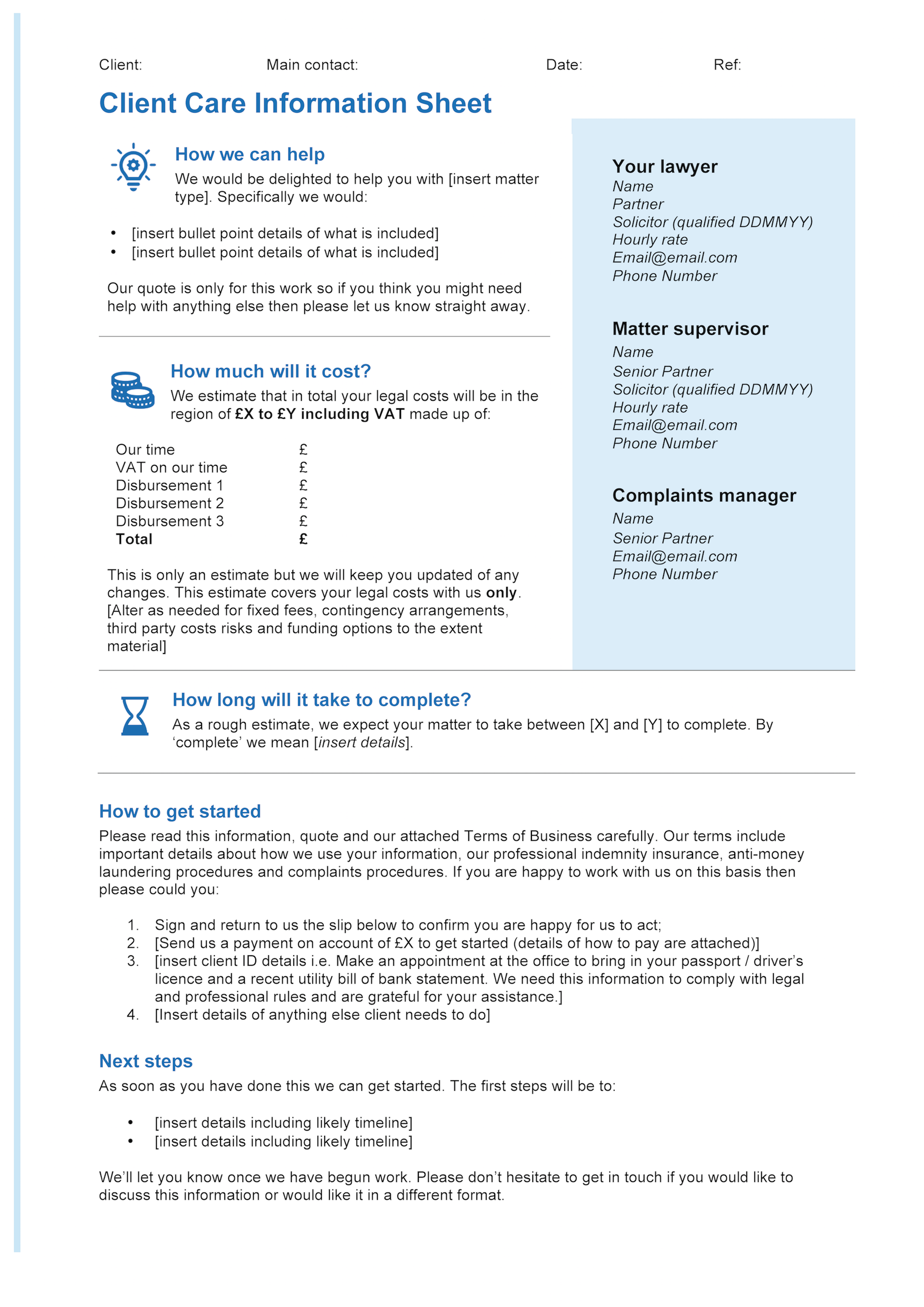The Solicitors Regulation Authority (SRA) has recently published a client care letter checklist (see summary below) on its website to help solicitors assess whether the regulator is likely to find their initial client paperwork suitable or not. For 99.9% of law firms I can probably save you the suspense: the answer is no (sorry!).
The SRA has stressed that client care letters should be short, easy to read and make it obvious who will do what next. The SRA even goes so far as to suggest the use of icons. ‘Icons!’ I hear you say? What has our profession come to (smiley face)? I appreciate that the SRA’s advice may be difficult to take coming from an organisation which gives its horrendous PDF forms catchy names like “FA10b” and nonchalantly refers its readers to paragraph 5(4) of Schedule 13 to the Legal Services Act but I have to say I do think that the SRA have a point. Most solicitor client care letters still cram all of the old ‘Rule 15’ information into one letter, despite the fact that rule 15 was scrapped over a decade ago. Most clients I speak to find client care letters daunting and very hard to follow. Even as a lawyer it can be a lot of work to separate the key information from the boilerplate text.
The one-page client care letter challenge!
For simple matters you should be able to offer your clients a very short client care letter, possibly taking up just one page. Take a look at the attached example.

It focuses only on the key information that the client needs to know:
- how can you help me;
- who should I contact day to day or if I have a concern;
- how long will it take;
- how much will it cost;
- who should do what next.
Where’s the rest of it you ask? In the terms of business, which should be worded as simply as possible without compromising their integrity as contractual terms. Now in certain types of matter you will definitely need to add more detail into the client care letter such as for exclusions of liability, acting in a potential conflict or where the pros and cons of whether to pursue a matter are more complex. That is important to do, even if it means taking up a bit of extra space. Don’t forget to discuss any key issues with the client also, particularly if the client may have difficulty understanding legal matters or letters. For higher risk scenarios the SRA demands ‘informed consent’ and not simply the insertion of a standard paragraph within the terms. Even so you should still be able to set out the key information in a simple manner over a page or two. Doing so could also have benefits in reducing client complaints and improving the rate at which clients sign up. In the current market it would also set you apart from the competition.
If you’re interested in taking on the one-page client care letter challenge (OK so that’s a thing I just made up but we could make it real!) you can use the attached as inspiration. If you want the Word versions of this client care letter and terms these are available from our website (if you literally just want the client care letter in Word then direct message me). However you choose to approach it I certainly would encourage solicitors to take action because the SRA have highlighted a serious problem here. Your clients will thank you and if the SRA does follow up on this guidance with some form of checks in the future then you can relax knowing that you are compliant. Good luck!
Full summary of the SRA’s client care letter checklist:
1. Is it concise? It should not be too lengthy. The SRA encourages firms to think about whether some information could be separated out such as into the terms of business
2. Is it easy for the client to read and in plain English? It should avoid legalistic language or jargon particularly for vulnerable clients
3. Do you highlight key information such as by using headings, bold text or icons?
4. Do you explain what is going to happen and when?
5. Is it clear how much the matter is going to cost?
6. Is it obvious to the client what they need to do next?
7. Is it clear what the purpose of your client care letter is?
8. Have you tailored the letter? It should not include irrelevant generic information
9. Have you included your contact details?
You can view the full SRA guidance in its own words on its website.
Want some help?
Call 01789 868444
